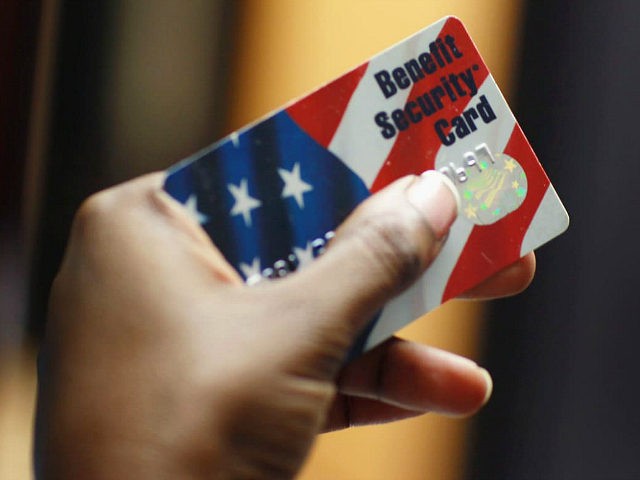The U.S. Department of Agriculture (USDA) spent a total of $4 billion on improper food stamp payments to those receiving benefits through the Supplemental Nutrition Assistance Program (SNAP), the USDA confirmed with Breitbart News on Friday.
The USDA’s Food and Nutrition Service announced this week that improper payments made up 6.3 percent of SNAP money in the fiscal year (FY) 2017—the latest data available from the agency.
Breitbart News analyzed the USDA’s data on food stamp spending and found that $4,007,026,532 of the $63,603,595,754 the agency spent on SNAP in FY 2017 went to improper payments.
The USDA told Breitbart News that “it is important to note that improper payments include both overpayments and underpayments,” meaning that households on SNAP that received less than what they were supposed to receive for the month are also included in the percentage rate.
Brandon Lipps, the Acting Deputy Under Secretary for Food, Nutrition and Consumer Services at the agency, said that most improper payments are due to “human errors”—either because of state agencies miscalculating benefits or benefit recipients giving state agencies the wrong information.
The USDA said that state agencies cause about 60 percent of these errors while the remaining 40 percent is due to benefit recipients not providing the proper information about their income, place of residence, and other necessary details the agency needs to provide them the right amount in benefits.
The national percentage rate is an average of state agencies’ accuracy in paying the correct amount in SNAP benefits to food stamp recipients and does not always reflect fraud from food stamp users, according to the USDA.
The USDA’s Food and Nutrition Service said that states with high payment error rates could be labeled “a liability,” and have to “owe money to the federal government.” Out of all 50 states, 14 states are in “first-year liability” status, meaning they had a poor accuracy rate for one year and could face financial penalties if they have a “poor error” rate in the next year.
The state with the highest payment error rate, Delaware, had a 13.95 percent error rate. Rhode Island came in second with an 11.24 percent payment error rate, and Michigan took third with a payment error rate of 11.13 percent, according to the USDA data.
The USDA notes that the federal government offers “liability” states that owe money to the government to use 50 percent of what they owe on state-funded programs aimed at improving how food stamps are distributed. The federal government holds the other 50 percent as insurance in case the state becomes a “liability” for a third year in a row.
“Nutrition assistance programs work best when federal and state partners work together,” Lipps said.
The agency noted that this is the first time in three years the Food and Nutrition Service has released data on improper payments. The last time the agency released this data was for FY 2014 when improper payments consisted of 3.66 percent of SNAP’s budget—or $2.6 billion.

COMMENTS
Please let us know if you're having issues with commenting.